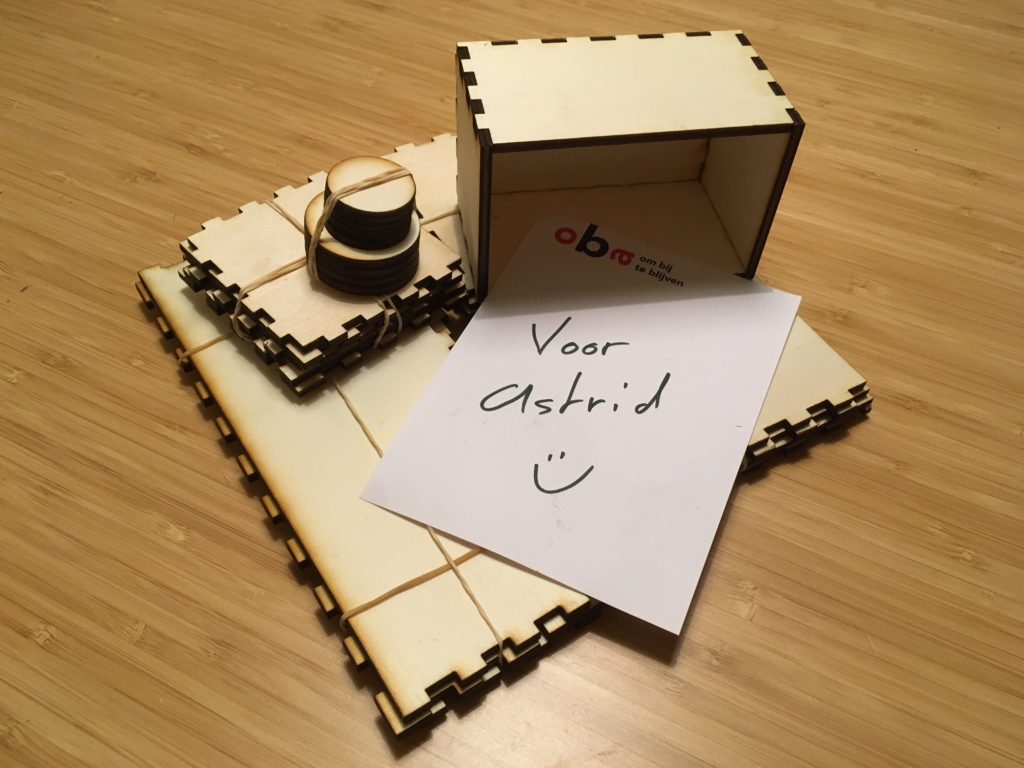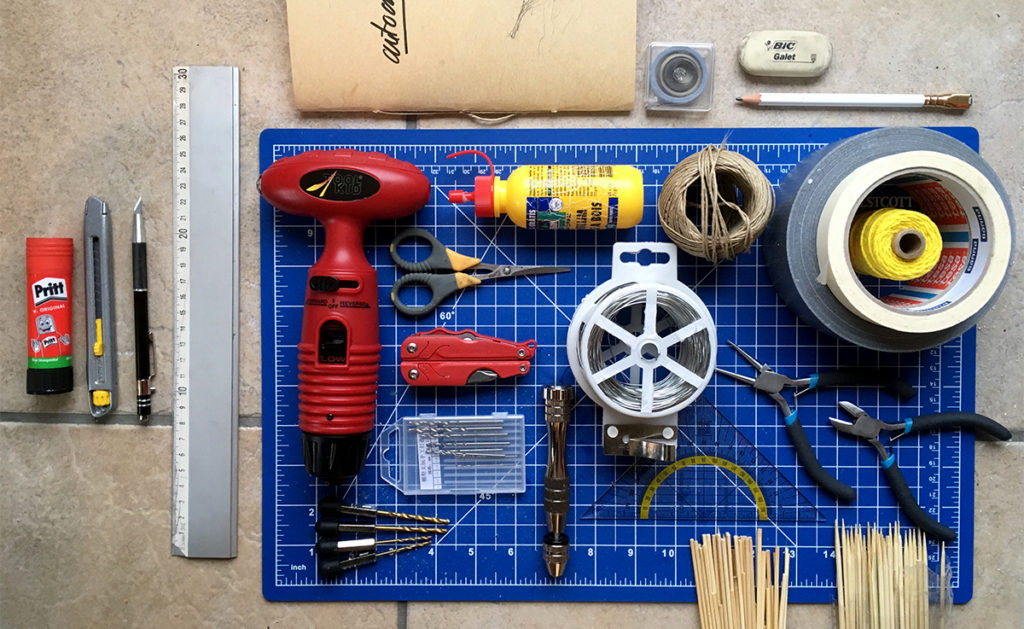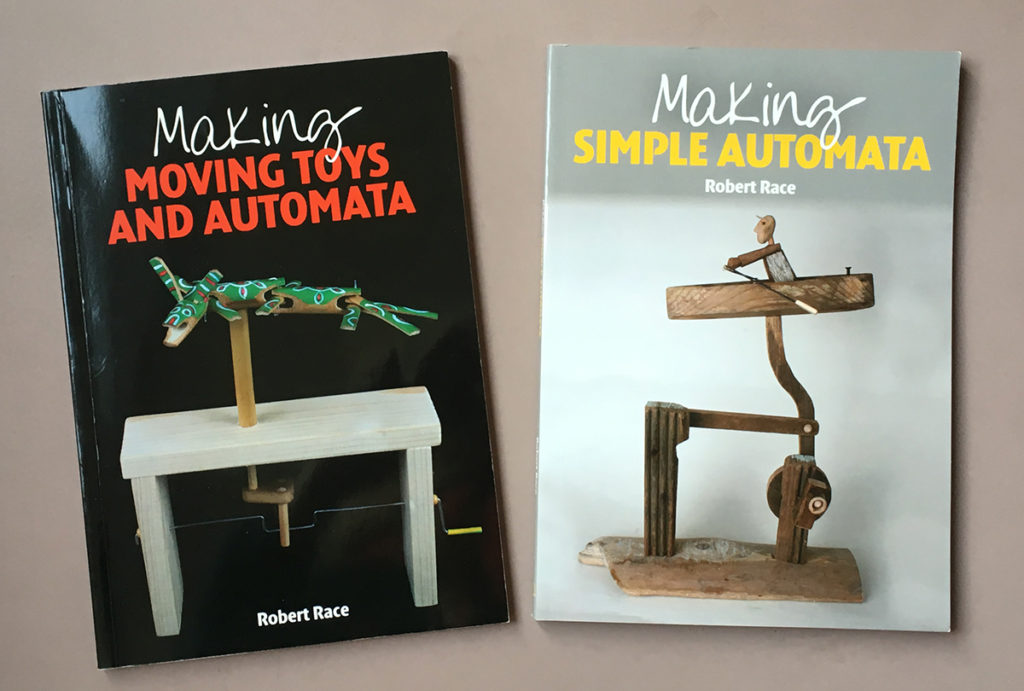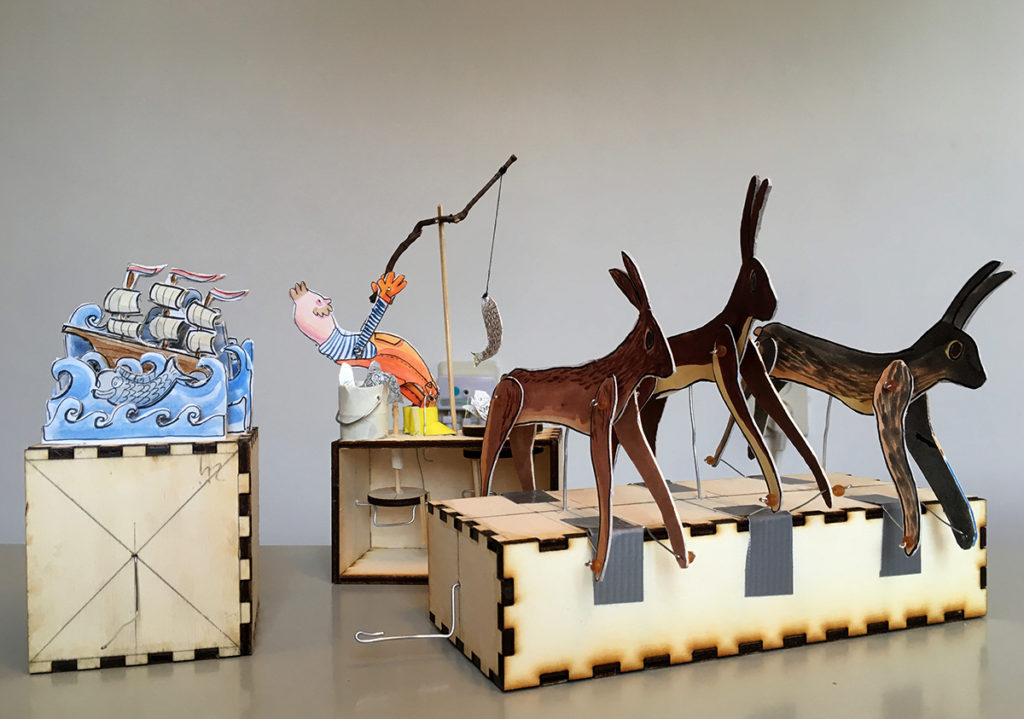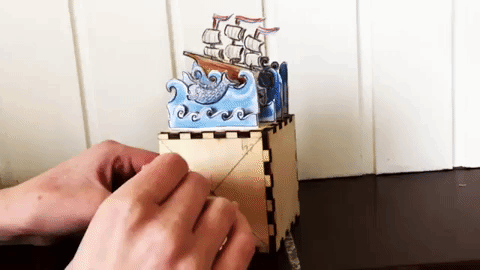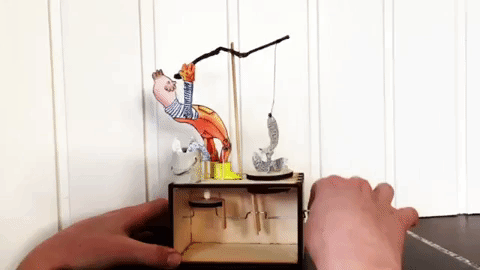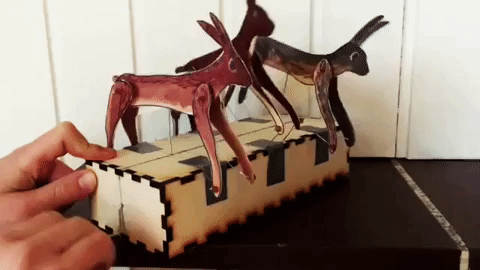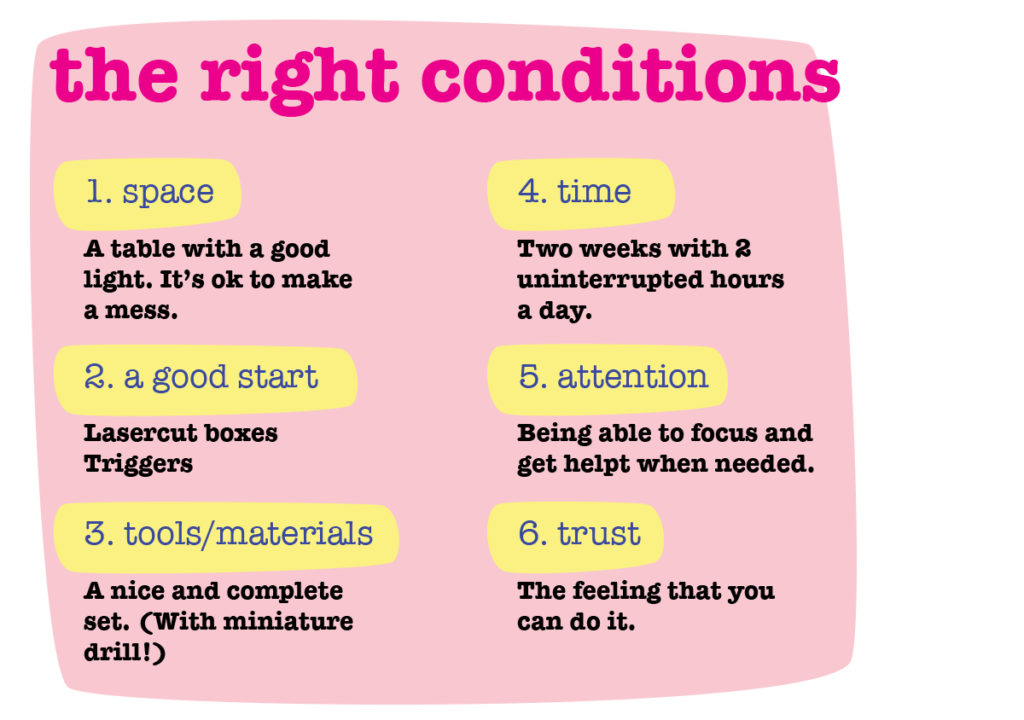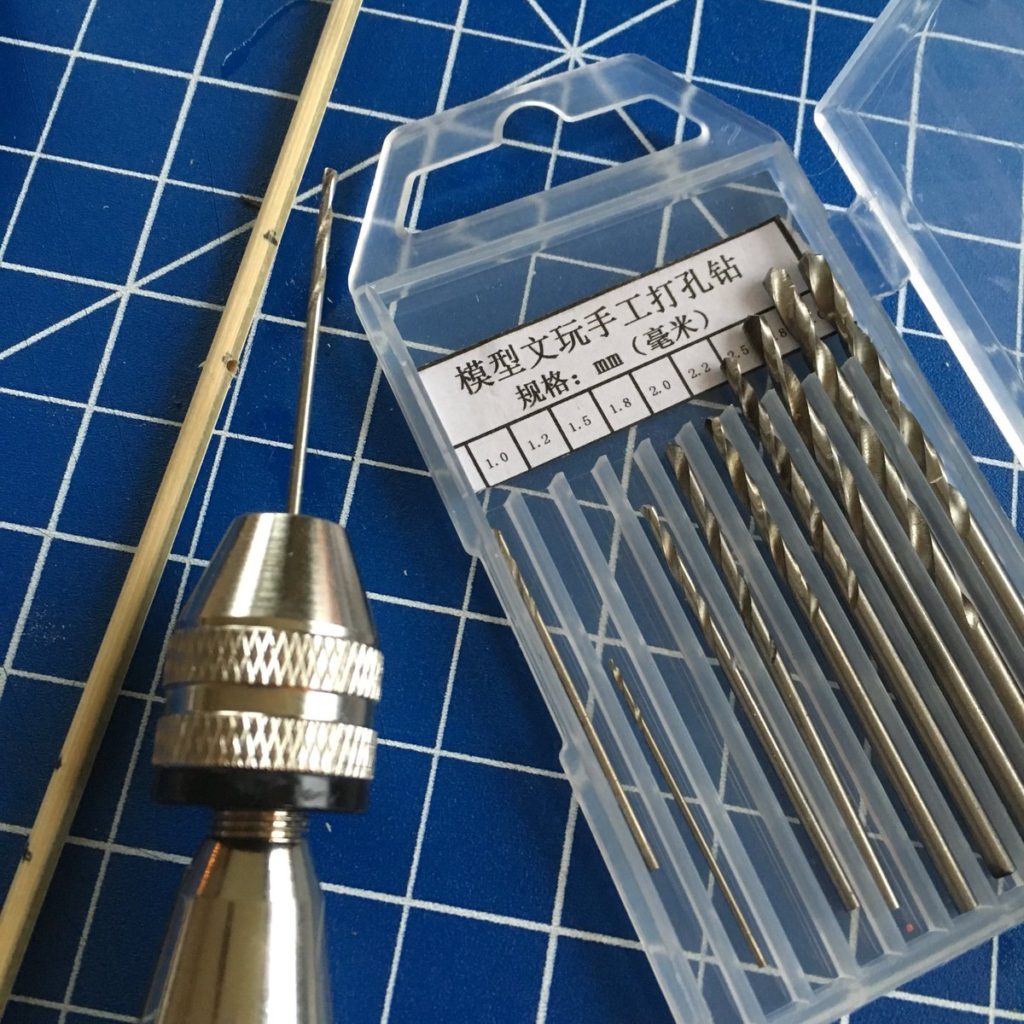The past two weeks I spent on making automata. Two reasons: I felt the need for flow and uninterrupted maker-happiness, and I wanted to test my Bauhaus approach tot makered theory. In this blog I will analyse my experience and compare it to my theory.
What I did
I built three machines. The machines are product of my imagination. The assignment was to built automata with the tools and materials I brought, but I specified nothing else.
I brought this:
I built these:
Jumping hares (that look like deer or horses, I know…)
The model
In my Bauhaus inspired model, I like to approach makered projects from the ingredients side. I chose this approach because I noticed a lot of projects don’t fully succeed because of lack of skill or experience. Usually there is a lot attention for the STE(A)M goals, but less for something common like actually learning tot saw. While at the same time the inability to saw will compromise the project! The outcome will be disappointing and the makers disheartened when too difficult skills are needed. This insight is the core of my thinking.
So here’s my grocery-list for preparing a nice makered project. (I filled it with my automata project as an example.)
The ingredients of a project
I believe there are three kinds of ingredients for a nice project:
- The skills that you’ll need to realise the product. These are tool skills and thinking skills. (I know skills are also knowledge, but calling them skills emphasises that they are also experiences.)
- You need knowledge that is related to the project: if you will build something, it is important to know what others do on a super high level. A memory that turnes out to be useful.
- You need inspiration that will serve as the trigger: something that will get you going.
In my automata project:
- skills: a list of tools and common designer-skills.
- knowledge: my knowledge of artists like Jean Tinguely, Alexander Calder and Keath Newstead. I really like them all, but never managed to translate their work to my own. I like Tinguely but never felt the urge to make something like that myself. I love Newstead, but his things are so cool that I feel intimidated (and blocked as an effect). And I made a fake Calder mobile, but never set myself to making a pretty circus like his. I want machines, not a performance. So the final ingredient is a trigger:
- inspiration and trigger: the books of Robert Race and the works of Wolfcatworkshop. I love those because they show me it can be done, even without a big workshop of months of time.
So: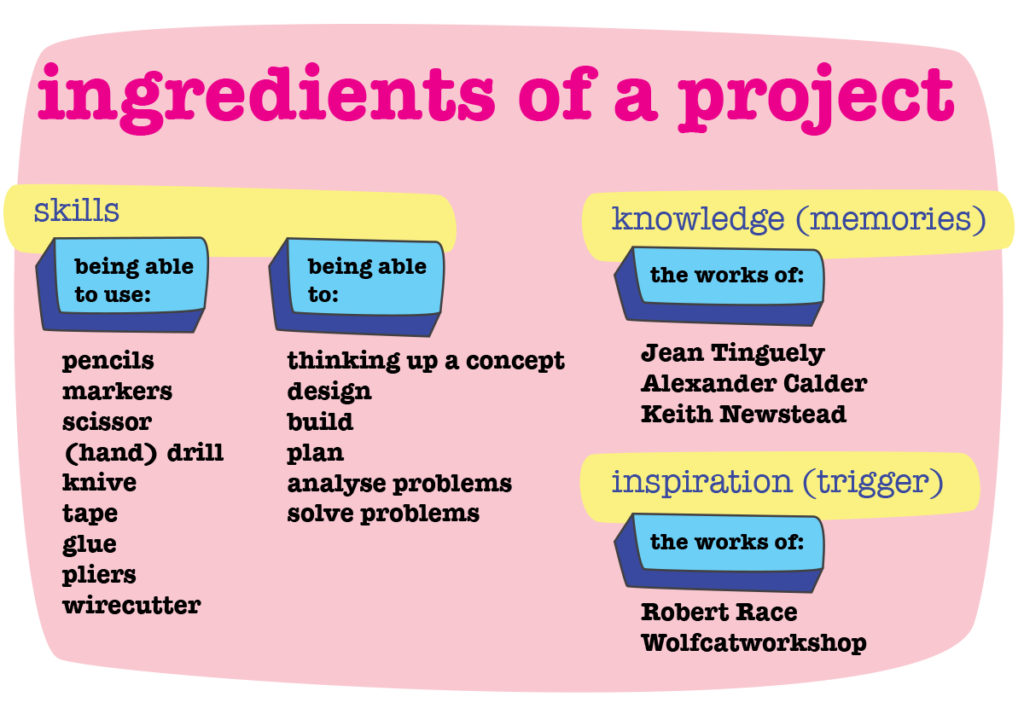
Creating the right conditions
I found that very often all ingredients are there, but the conditions are not up to parr. I wrote a little book about creating the right conditions aimed at families, but I believe it applies for us all:
- You need space: a nice place to work, where you don’t have to hold back. Possible damage is within acceptable boundaries (Don’t offer soldering if you only have expensive antique furniture.) The maker feels comfortable and free. In my case: a common table, and a cutting mat.
- You need a good start: the empty canvas if a nightmare to most. Help to start! In my case: the lasercut boxes, and my trigger inspiration.
- You need high quality tools and materials: a complete set of good stuff. (No rock hard cheap pencils!) In my case: I paid a lot of attention to the drills, I knew making nice holes for the moving parts was of the essence.
- You need enough time: often time is the most difficult one. Make sure there is enough time to fail and start again, to wander off of just mess around. Ideas take time to emerge! In my case 2 weeks, with usually up to 2 hours of uninterrupted time.
- You need attention: be there! Don’t take out you phone and get distracted. And as a coach: be there! Look closely! I my case: my phone in the other room helped me focus. And asking for feedback kept me on track.
- You need trust: the feeling you can achieve your goals (and others believe that too). In my case: the skills I master, the memories I could use and the good start I brought.
What I learnt
I had a lot of fun. I was really amazed how much the automata themselves inspired me, without any effort the ideas would emerge. I kept my triggers close: I went through the Robert Race books almost every day.
It was really cool how the proces was non lineair; all three machines were designed and built in different steps. I believe that is really important; a makered project cannot be completely predicted and thus forced without disturbing the flow. We should create conditions, and not dictate a process.
The two weeks of time was great. While shopping for groceries, playing a game with my kids of walking the beach the thinking would continue. Like a long relaxed thread.
It was amazing to experience my own design process both from the perspective as a maker and as an educator. I believe even more in my Bauhaus inspired model and the ingredients approach.
And I really loved my Japanese drill.
Further reading:
- The Bauhaus inspired approach, blog 1: making in primary schools
- The Bauhaus inspired approach, blog 2: for making you need skills
- Blog and book: on the six conditions for making.
On automata (Dutch, but with loads of images):
